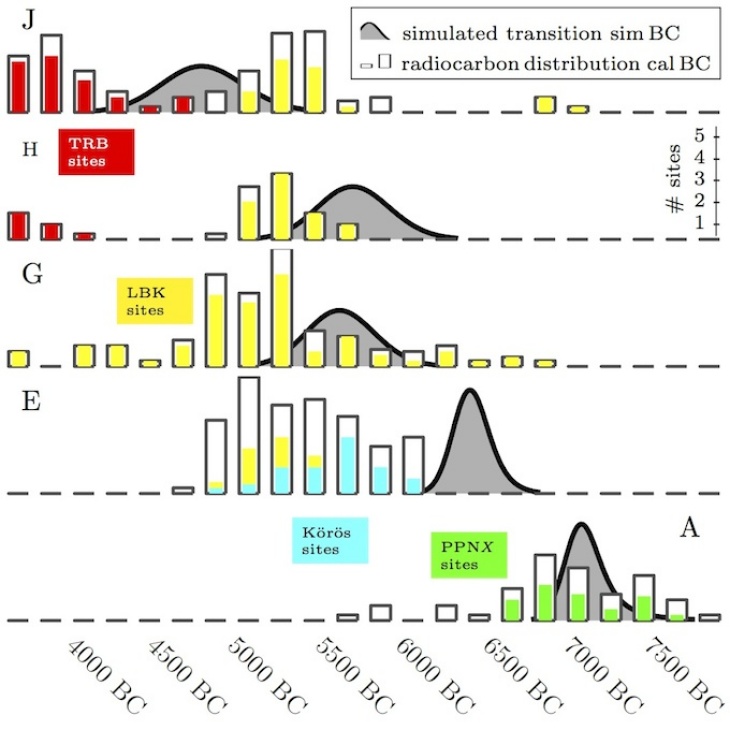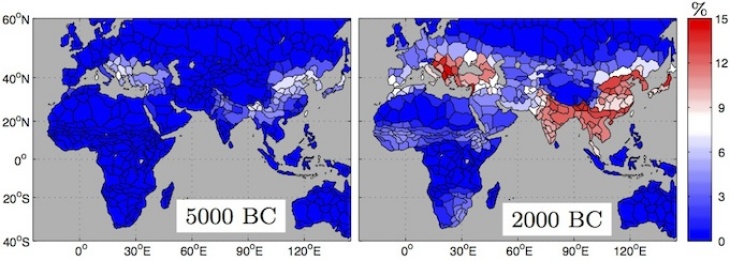Human Ecodynamics
The dynamic and two-way relationship between changing environments and cultural changes is the subject of our research topic "Human Ecodynamics". For our research, we integrate data from ecological, climate, and archaeological archives, and we use a model system that can describe socio-technological evolution within the environmental context.
Global Land Use and technological Evolution Simulator (GLUES)

Comparison between simulated and radiocarbon-dated transition to farming in European regions. Graphics: Lemmen/Hereon
We develop and operate the Global Land Use and technological Evolution Simulator (GLUES), an integrated model of socio-technological evolution. The adaptive dynamics of characteristic aspects of a regional society and its population density are simulated in the context of neighbour relations and changing climates.
With GLUES, we successfully described the inhomogeneous expansion of agriculture into Europe some 8000 years ago. We found that abrupt climate events did not trigger, but modulate this expansion.
- Lemmen, C. and K. W. Wirtz (2014): On the sensitivity of the simulated Neolithic transition in Europe to climate extremes. J. Archeol. Sci. 51, 65-72, doi:10.1016/j.jas.2012.10.023
- Wirtz, K. W. and C. Lemmen (2003): A Global Dynamic Model for the Neolithic Transition. Climatic Change 59 (3), 333-367, doi:10.1023/A:1024858532005

